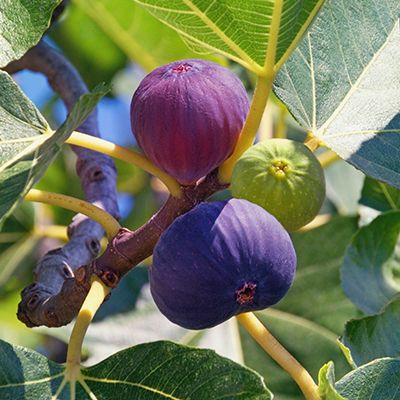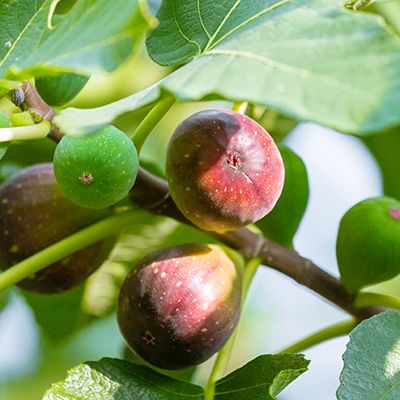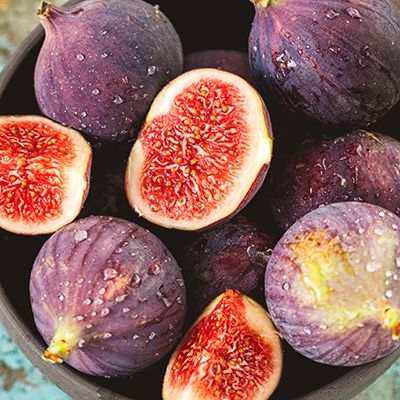


Fig Trees
Location: Fig trees are native to western Asia and the eastern Mediterranean. They should have full sun or be planted in a walled corner which gets reflected light. They will grow in any Bay Area soils. Trees can get to be 15 to 20 feet tall. Judicious pruning can hold them to 10-12 feet tall. Allow space of at least 10 feet by 10 feet for the tree to grow.
Planting: When planting a Fig tree dig the hole three times the width of the container and 1/2 to 1 inch less deep than the height of the root ball. Mix thoroughly the excavated soil with one third of its volume with compost such as Gold Rush. Place the Fig Tree in the excavated hole and use the compost-native soil mixture as backfill for the tree. Press the soil mixture firmly in place. Water the tree to settle the soil and to saturate the root ball. Add more soil mixture if needed. Use the excess soil mixture to build a berm around the border of the excavated hole. As the tree grows, extend the berm to the drip-line of the tree.
Water: Flood weekly during the first year and then at 2 to 4 week intervals when the tree is mature. If a drip system is used, place hosing along the tree’s dripline with emitters on 18 inch centers. This system will also need to be adjusted as the dripline expands. Both of these methods are preferable to sprinklers, since they reduce water splash, a common byway of fungal spores. If sprinklers must be used, adjust heads so they angle water low and away from the trunk. Keep in mind that a large, mature tree may consume up to 30 gallons of water a week in July and August.
Fertilize: Use Master Nursery Fruit Tree & Vine Foodtwice a year, around Memorial Day and Labor Day. If you prefer organic fertilizers, use Dr. Earth Fruit Tree Fertilizertwo to three weeks earlier. Water in well after application. If trees show vigorous growth, no fertilizer is necessary. Supplement organic fertilizers with Iron Sulfate to prevent chlorosis.
Prune: When completely dormant, every December or January. Prune to remove dead, dying, diseased and crossing branches and head back to desired size. Figs frequently set two crops of fruit: one in early summer on last year’s growth and one in late summer on current season’s growth.
White and brown figs require heavy annual pruning and produce their best fruit on current season’s wood. Branches produced during the last summer should be cut back heavily during the dormant period. Cut back to two bud spurs.
Black figs produce fruit on wood that is one year old and older. Winter pruning should only thin out any interfering or rubbing branches and keep the top evenly spaced.
Spray: After pruning in December or January. Dormant spray in December or January after pruning with Master Nursery Pest Fighter Year-Round Spray Oil.
Other Comments: Fig trees are seldom troubled by insects or diseases. However, if you do note unusual symptoms, bring several leaf and twig samples to Wegman’s Nursery for evaluation. Gophers love fig tree roots. You may need wire basket protection.